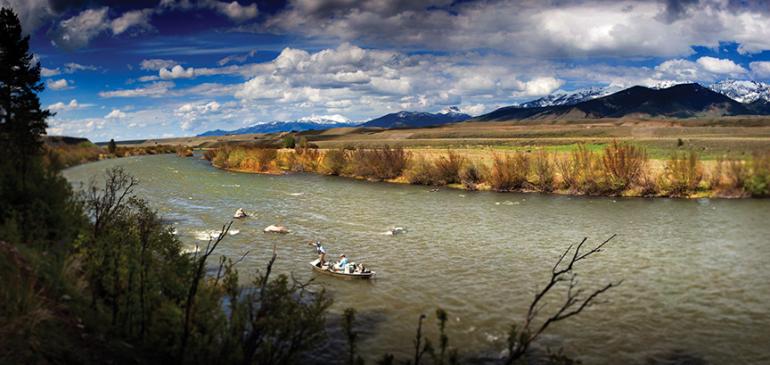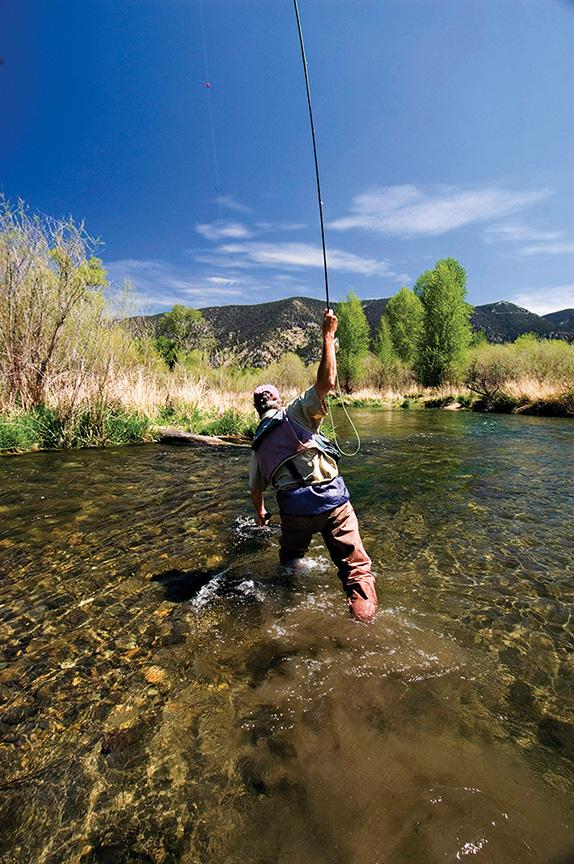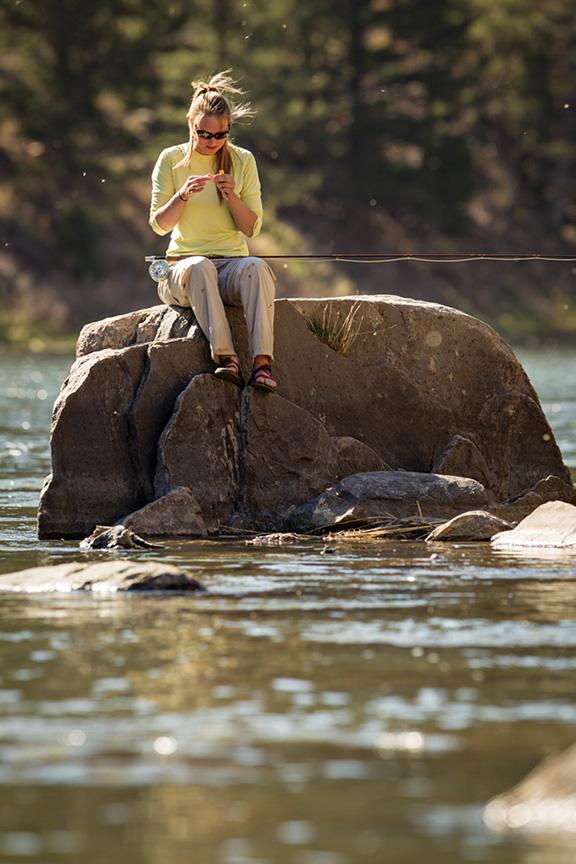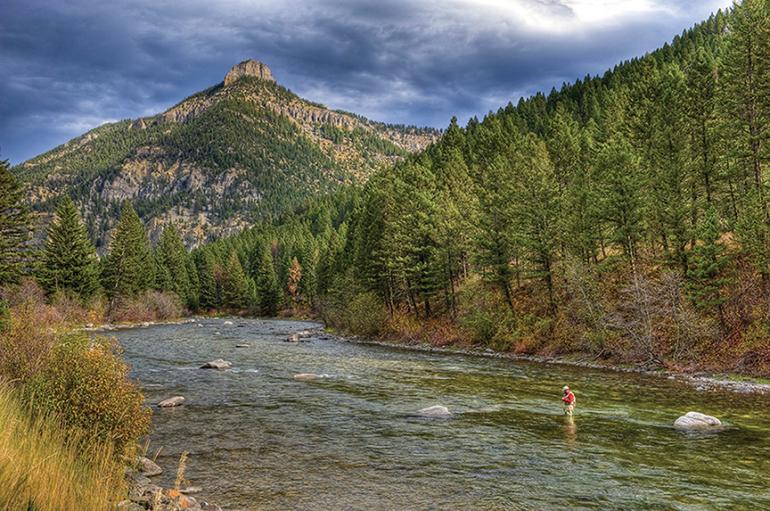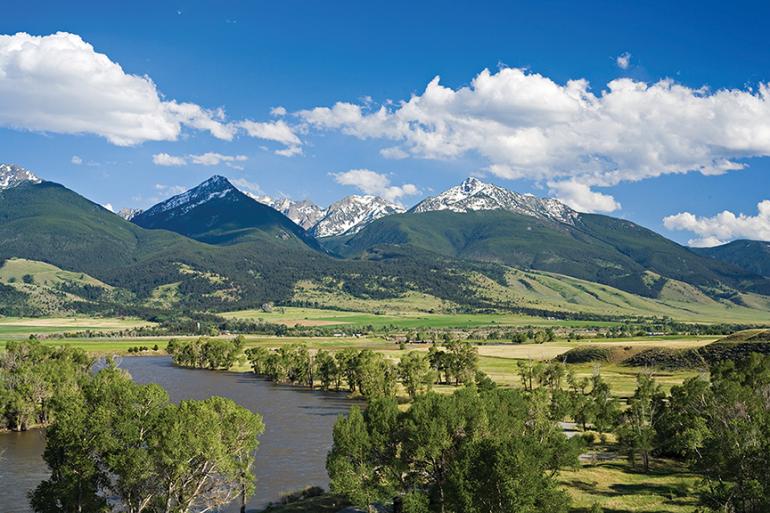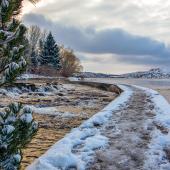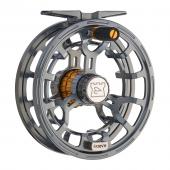Fever to Fervor
Early-season trout haunts.
A long Montana winter can give a guy a serious case of cabin fever, and what better way to cure it than to get a fly rod in hand and head for some productive water this spring. But there are a few keys to catching early-season trout that you’ll want to consider. First, not all streams and rivers are open throughout the year, so check your local regulations. Generally, most of the larger rivers and some of the spring creeks are open year round, but most of the smaller streams do not open until the third Saturday in May. Either way, the single most important factor in catching early-season trout is to spend your time fishing the best water. Here are some of my favorites and how I fish them.
Livingston Spring Creeks
Armstrong’s, DePuy’s, and Nelson’s are true spring creeks that flow out of an aquifer at a constant temperature of 52-58 degrees. So if you can brave the weather, you can catch fish in ANY conditions, no matter how cold. Midges hatch throughout the winter, offering some good dry-fly fishing on calmer days, but the best fishing is usually on small nymphs, scuds, midge larva, and midge pupae. Starting in late February and early March, the baetis (small blue-wing olive mayflies) hatches will start and these provide some terrific early season dry-fly fishing, especially on overcast days. Because the spring creeks are not affected by runoff, they remain excellent during May and June when most other rivers are high and dirty. Landowners charge access fees on each creek, but the early season rates are a bargain at $40. On April 15 the rates go to $75, and then up to $100 from June 15 through the fall.
Gallatin River
Access is easy with 191 running right along the Gallatin most of the way from Yellowstone Park to Four Corners. The upper river, from the Park down through Big Sky and below, can be fun fishing during the early season, especially closer to Big Sky, where a few spring creeks flow in and bump up the water temperature. There is beautiful water all the way through the canyon, and you can catch lots of nice rainbows, browns, and even cutthroats on nymphs early in the season. Like the upper Madison, the Gallatin has a good population of stoneflies, so stonefly nymph patterns in sizes 8 down to 14 are a good choice. Almost any good, small, bead-head nymph pattern will work well in sizes 12 down to 18. Don’t forget about the East Gallatin; it's open below the mouth of Sourdough Creek, and you can find some good early season dry-fly fishing on midge and baetis hatches. Sculpin patterns and other streamers are the way to go if you are after that monster brown.
Madison River
In the spring, the lower Madison from Beartrap Canyon down to the Cobblestone access is one of the most popular places to fish close to Bozeman. There are lots of fish, mostly smaller rainbows and browns, and good dry-fly fishing (midge hatches, then baetis, and finally the Mother’s Day caddis in April and May). Nymph fishermen can slam them with everything from small bead-head nymphs to big stonefly patterns, especially in the Beartrap. The lower Madison has a healthy population of crayfish, and the big browns really gobble up the good crayfish patterns. Access is very easy on highway 84 between Four Corners and Norris, and there are several good Fish & Game sites where you can launch and take out. Don’t forget about the Upper Madison either—it’s now open year-round from McAtee Bridge to Ennis, and the stretch from Varney to Ennis has always been one of my favorites. This is great early nymph fishing and one of my own patterns, George’s rubber-leg brown stone in sizes 8-12, is murder up there. Try running a size 16 Copper John a foot and a half below it for a deadly nymph-fishing rig.
Yellowstone River
The best early season fishing seems to be centered on the water from Mallard’s Rest, about 12 miles to the south of Livingston, all the way down through town and below, right down to the Highway 89 bridge. This stretch has the highest population of rainbows, but you’ll catch some nice browns and cutthroats also. Nymph fishing is the most productive way to go with both stonefly nymphs and a variety of bead-head nymphs. You’ll find heavy midge hatches throughout late winter and spring, and these can bring up some nice fish if it isn’t too windy. The wind blows harder in Livingston than just about anywhere, but it is also warmer, and the river conditions are usually excellent from February on through the runoff. In early April, hatches of baetis mayflies also provide good dry-fly fishing. Trout stack up below where the many spring creeks enter the Yellowstone, so seek out those spots and you’ll catch more fish. The famous “Mother’s Day caddis hatch” in late April and early May that occurs just before runoff is often the best dry-fly fishing of the year.
Bighorn River
If you have a long weekend and don’t mind the drive, the Bighorn offers perhaps the best early season fishing in Montana. In the last couple of years the Bighorn has improved dramatically and right now there are lots of BIG rainbows and browns. This is primarily nymph fishing and the best early-season flies are a variety of sow bug patterns in sizes 18-20 along with midge larva and midge pupa in 18-24’s. Midge hatches will provide some dry-fly fishing but stick with nymphs and you’ll catch many more and larger fish. Streamers can work at times too, but good nymph fishermen are going to kick butt. Stick to fishing the upper river, from the Afterbay access down to the 13-Mile access. You can wade fish lots of areas, but floating is the best way to access the river, in anything from a float tube to a drift boat. Shuttles are available in Ft. Smith.
Spring Flies
To catch fish this spring, you're gonna need flies. Here are some of my favorites.
Livingston Spring Creeks—Harrop's No Hackle
René Harrop's Baetis No Hackle is deadly when these Blue Wing Olive mayflies carpet the water. It is highly visible until two or three fish eat it, and then it becomes the most incredible cripple pattern I have ever used.
The Gallatin River—Hare’s Ear
A Hare's Ear nymph is always a go-to in my box when fishing freestone rivers. This fly is a true fish finder when the fishing gets slow. I fish it in both the standard pattern as well as a bead head. It's just one of those buggy-looking nymphs that work well for caddis, mayflies, and stoneflies.
The Madison River—George's Brown Stone
My rubber-leg brown stone is one of my all-time, early season favorite nymphs on rivers like the Yellowstone or Madison. I often use a size 10 or 12 as the lead fly and tie in a dropper 18 inches behind this with a small bead-head nymph. Depending on the water depth, I'll add one or two splitshot to get it eye-level with the lunkers.
The Yellowstone River—Hi Vis Caddis
A great all-around attractor pattern, this is one of my favorite patterns during the Mother's Day caddis hatch. The bright orange on top of the elk hair serves not only as a strike indicator, but also differentiates your fly from the thousands of natural caddis on the water. I like to oversize using a #12 with a slightly olive body. I will drop a caddis larva, pupa, or peeking caddis inches below this fly.
Ultra Yuk Bug
Some of my biggest fish caught during the Mother's Day caddis hatch are not on dry flies but on an Ultra Yuk Bug! I let my fly get deep and twitch it up to the surface quickly, then drop my rod tip so that it sinks back toward the bottom. This mimics the action of smaller fish darting up to feed on caddis dries. Big fish don't often pass up an easy meal.
George Anderson has authored many articles for Fly Fisherman, Trout, Big Sky Journal, and several other publications. George and his son James own and operate the Yellowstone Angler fly shop in Livingston.

